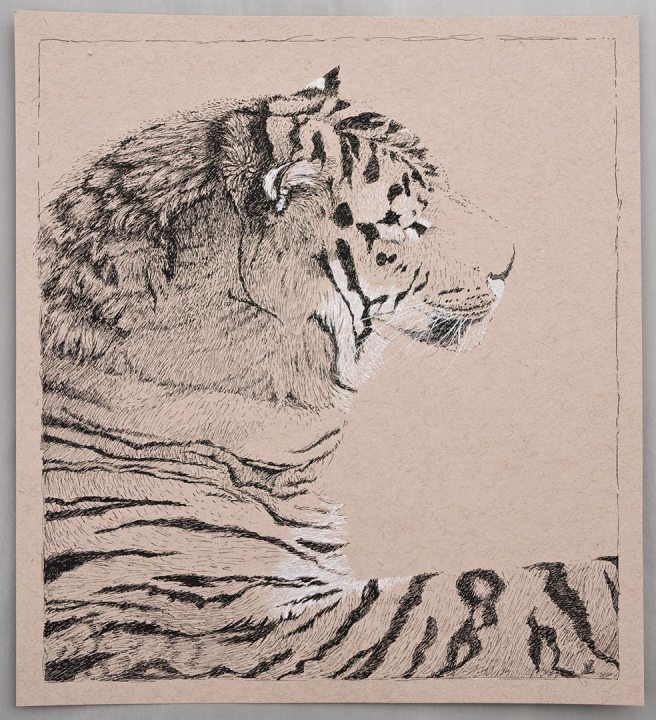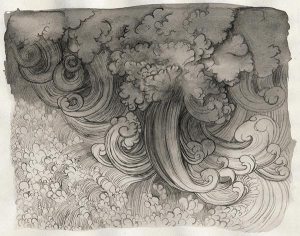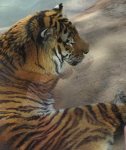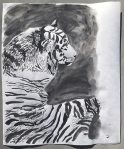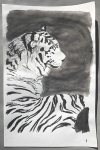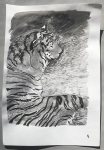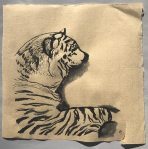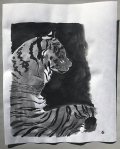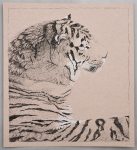
Ink on paper, 7” x 5”
Last March I ordered a Kuretake #8 fountain brush pen but found it too intimidating to use and set it aside. Drawings that others make with brush pens seem so gracefully decisive, describing subjects with minimal lines and no mistakes. The packaging also listed many instructions, including symbols for dire warnings, but it was written entirely in Japanese. Hmm. Well, worries of messy lines and mysterious warnings finally brushed aside, the pen has been used today.
My basic idea here was a scene with a stream originating from a distant mountainous area that becomes gentler towards the foreground where it can be a source of blessing, based on some verses in the Bible. One of them was Psalm 23, verses 1 and 2 saying “The LORD is my shepherd; I shall not want. He maketh me to lie down in green pastures: He leadeth me beside the still waters.”
Another very appropriate verse I found later is Proverbs 25:25, “As cold waters to a thirsty soul, so is good news from a far country.” This verse has a strong application in the New Testament as well. The word “gospel” literally means “good news” and in the famous scene of Jesus talking with the Samaritan woman at the well He presents Himself in terms of a well of water that quenches thirst in a way that the material things of this world never can. This is the thirst of a soul.
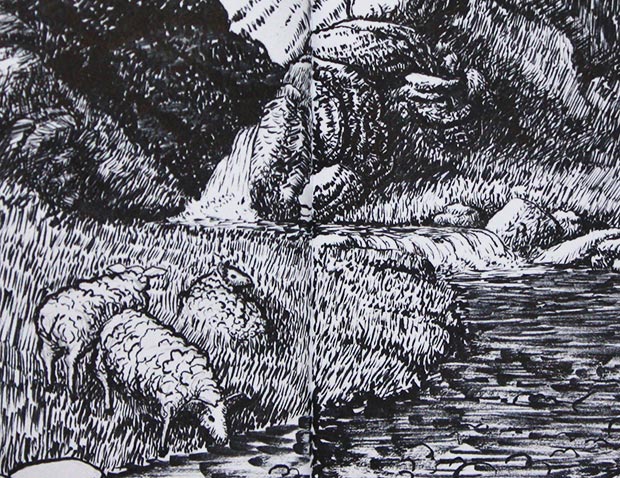
Here’s a clearer image of the waterfalls and sheep.
